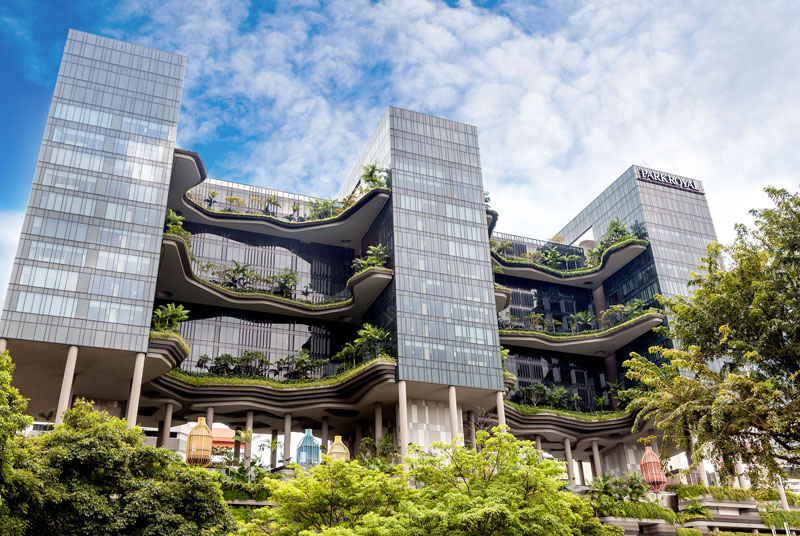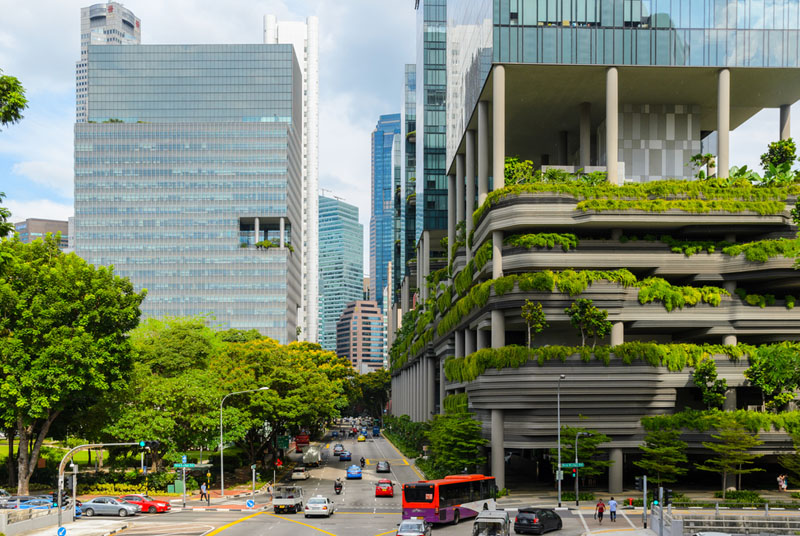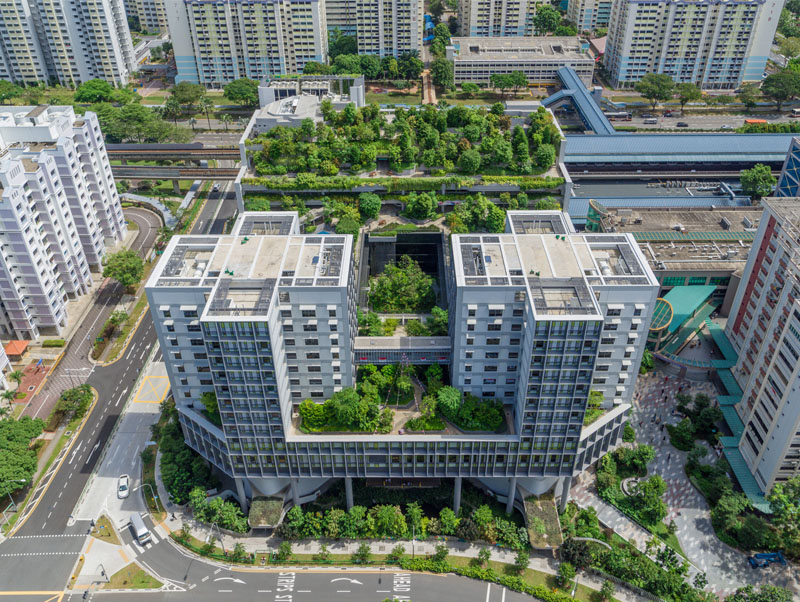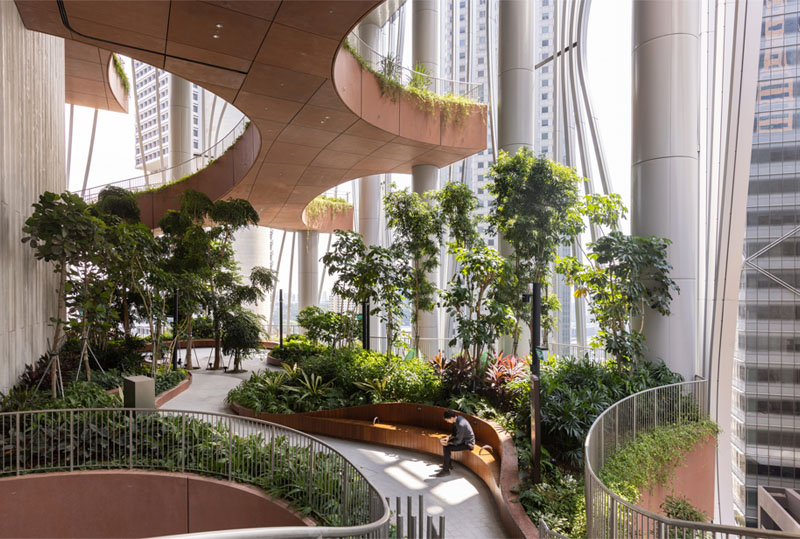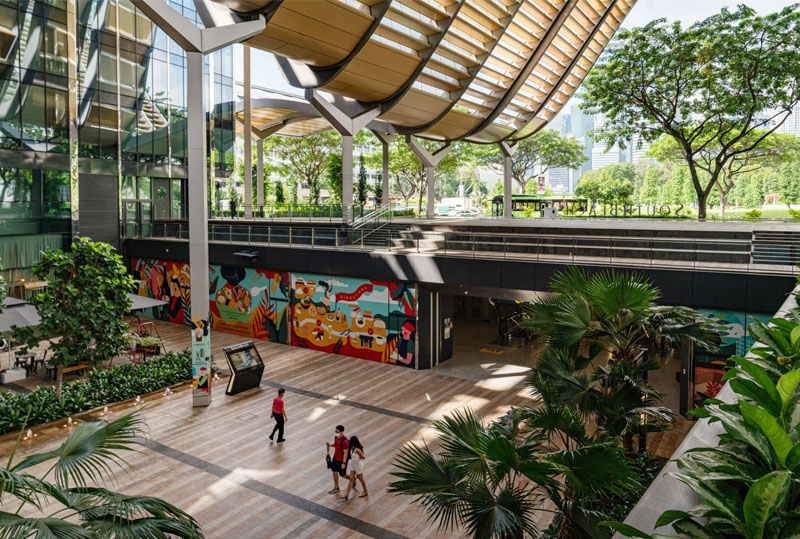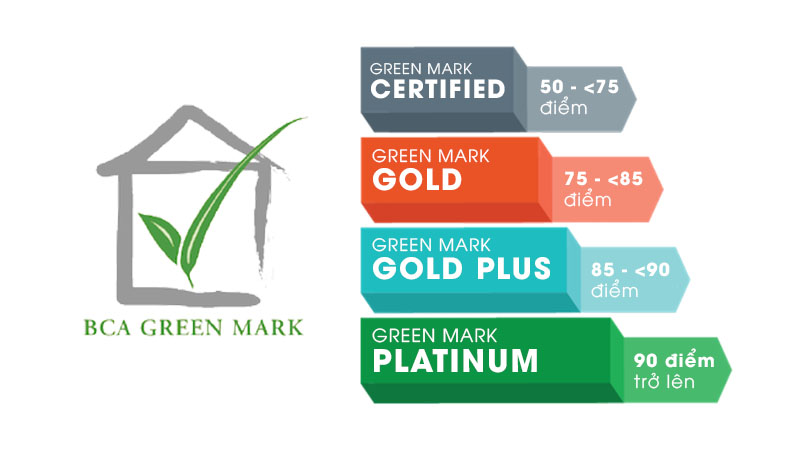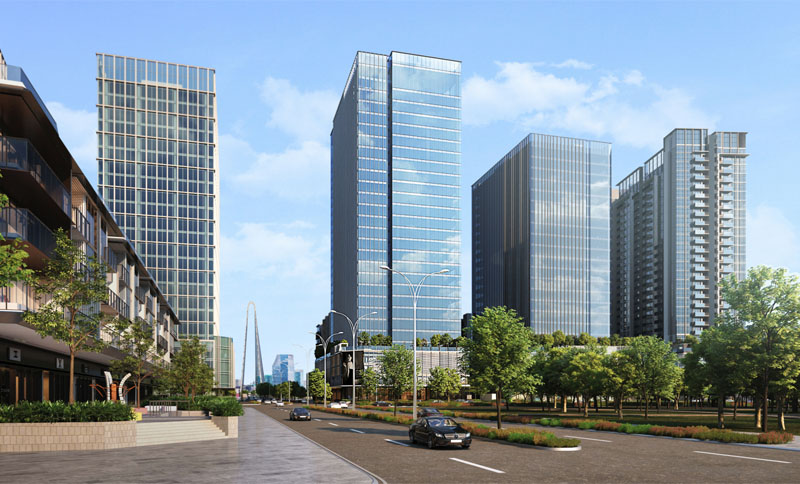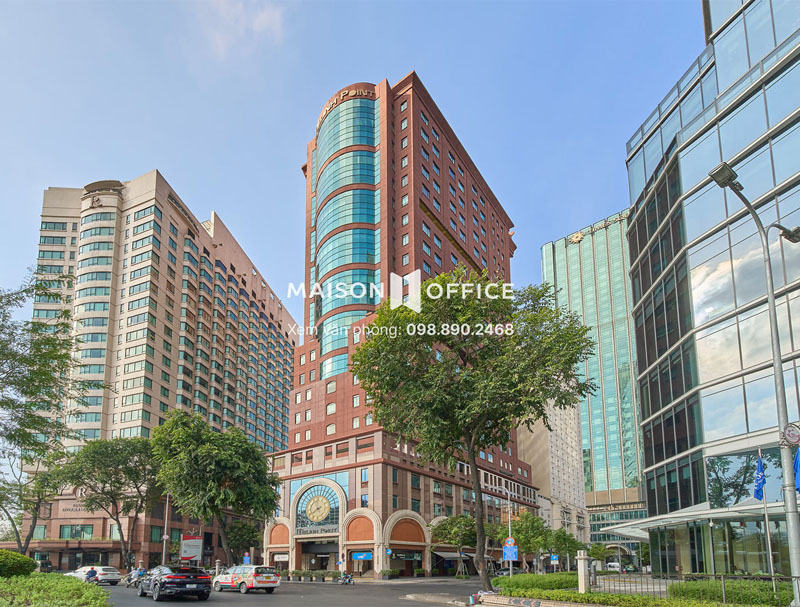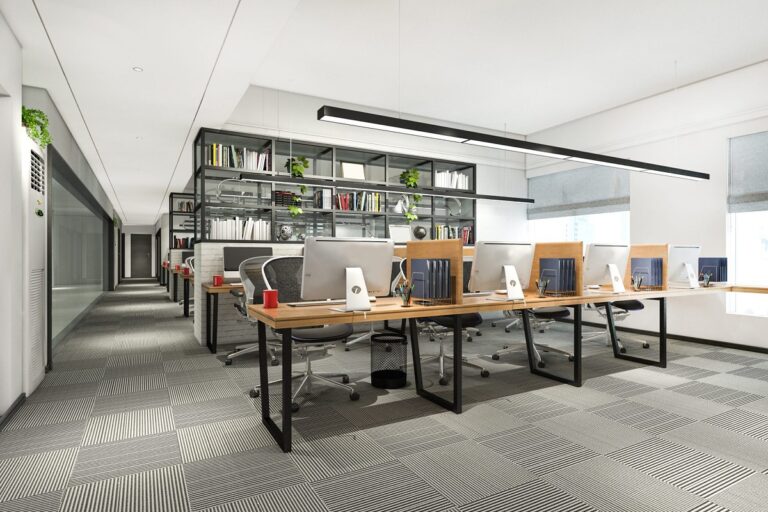Green Mark Certification: Sustainable Building Standards & Benefits
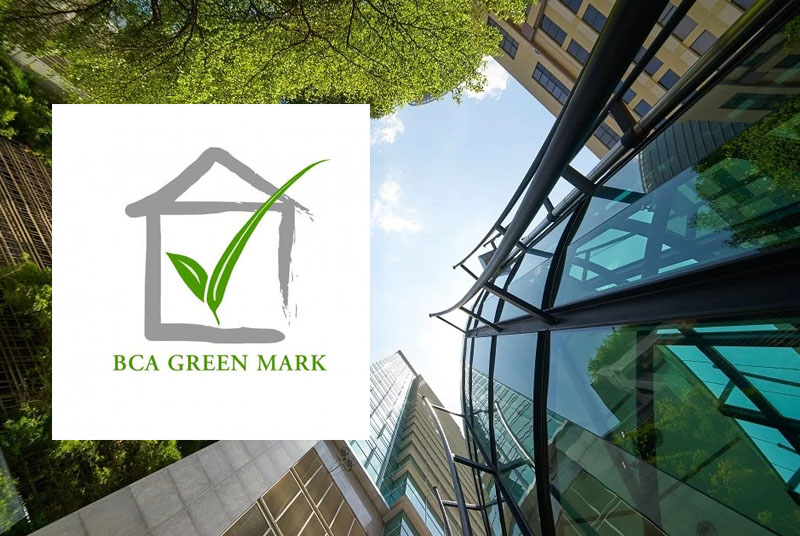
In the face of challenges such as climate change and resource depletion, the trend of sustainable construction and development has become a top priority for many countries today. In this context, the Green Mark standard has emerged as a powerful tool, promoting the construction of environmentally friendly green buildings. This evaluation system not only thrives in Singapore but has also spread to Southeast Asian countries.
Table of Contents
- 1. What is the Green Mark Certification?
- 2. Origin of the Green Mark Certification
- 3. Benefits of Obtaining BCA Green Mark Certification
- 4. Green Mark Standards for Different Types of Buildings
- 5. Evaluation Criteria of the Green Mark Certification System
- 6. Levels of Green Mark Certification
- 7. Notable Projects Achieving Green Mark Certification
1. What is the Green Mark Certification?
The Green Mark Certification Scheme is a green building rating system designed to evaluate the environmental impact and performance of a building. It was introduced by the Building and Construction Authority (BCA) of Singapore’s Ministry of National Development in January 2005.
The Green Mark system shares similarities with other internationally established rating systems, incorporating sustainability criteria such as energy efficiency, water conservation, and sustainable management and operations. However, it also includes significant adjustments tailored to the tropical climate of Singapore.
The development and adoption of the Green Mark certification aim to reduce the negative environmental impacts of construction while fostering sustainable growth in the building industry. As of today, over 110 buildings worldwide have received the Green Mark certification for green building practices.
See more about global green building certifications:
- LEED Certified
- WELL Certified
- Green Mark certification
- LOTUS certification
- EDGE certification
- Green Star certification
2. Origin of the Green Mark Certification
The Green Mark certification was developed by the Building and Construction Authority (BCA), a government agency in Singapore responsible for guiding the development of the construction sector.
Since its introduction in 2005, BCA’s Green Mark has quickly become a key tool in directing and promoting the construction of green buildings in Singapore. The Green Mark certification has not only been widely adopted in Singapore but is also applied in many other countries, especially in Southeast Asia.
3. Benefits of Obtaining BCA Green Mark Certification
The Green Mark standards are designed to promote the construction and operation of sustainable, environmentally friendly buildings. Achieving this certification brings several important benefits:
- Environmental Protection: Green Mark certification encourages the construction of sustainable and environmentally friendly buildings, helping to reduce waste, cut greenhouse gas emissions, and protect the natural environment.
- Resource and Energy Savings: The Green Mark system promotes the efficient use of resources and energy, prioritizing renewable and natural energy sources. This not only reduces greenhouse gas emissions but also helps save on long-term operational costs.
- Improved Indoor Environmental Quality: The Green Mark system focuses on improving indoor environmental quality. This includes measures for optimizing air quality, water resources, natural lighting, and noise reduction, creating healthier and more comfortable environments for occupants.
- Increased Property Value: Buildings that receive Green Mark certification demonstrate a developer’s commitment to sustainability, providing significant economic, social, and environmental benefits. As a result, such buildings often have higher asset and brand value.
- Fostering Innovation and Technology: The Green Mark certification encourages the application of advanced technologies in construction and operations, fostering creativity and innovation in the building sector to create more sustainable buildings.
- Raising Public Awareness: The adoption of Green Mark standards also helps raise awareness about the importance of sustainable green building practices, contributing to a stronger community commitment to environmental conservation.
4. Green Mark Standards for Different Types of Buildings
Since its launch in 2005, the Green Mark standard has evolved into several versions to apply to various types of buildings:
- Green Mark for Non-Residential Buildings (GMN): This version is for non-residential buildings such as office towers, shopping malls, educational institutions, hospitals, hotels, and other non-residential structures.
- Green Mark for Residential Buildings (GMR): This version is for residential building projects, including condominiums and villas.
- Green Mark for Parks (GMP): This version sets standards for evaluating public parks, green spaces, gardens, and recreational areas to ensure they provide environmental and social benefits.
- Green Mark for Districts (GMD): This version is applied to urban areas, overall developments, and sustainable planning projects for entire districts or regions.
- Green Mark for Existing Non-Residential Buildings (GMENR): This version applies to non-residential buildings that have been in operation for an extended period.
- Green Mark for Existing Residential Buildings (GMER): This version provides criteria for evaluating and certifying existing residential buildings, along with recommendations for improvements to enhance energy efficiency and sustainability.
5. Evaluation Criteria of the Green Mark Certification System
The Green Mark Certification System evaluates buildings based on a series of criteria, including mandatory (prerequisite) criteria required to achieve certification, as well as exceedance criteria (bonus points for new initiatives or ideas). These criteria are classified into five main categories:
5.1. Energy Efficiency
This category focuses on optimizing the use of energy-saving systems, including air conditioning, ventilation, lighting, elevators, and escalators. It also encourages the use of natural and renewable energy sources.
Some energy optimization solutions recommended by the Green Mark criteria include:
- Using more efficient air conditioning units.
- Designing natural ventilation systems.
- Maximizing natural daylight and using energy-efficient lighting systems.
- Installing CO sensors in parking ventilation systems.
- Installing elevators and escalators with AC motor controls.
- Prioritizing environmentally friendly and renewable energy sources.
- Using smart energy devices such as heat recovery systems, motion sensors, reflective panels, and heat pumps.
5.2. Water Efficiency
This criterion focuses on reducing water consumption by implementing measures such as:
- Installing leak detection and measurement systems to better control water usage.
- Using water-efficient fixtures and fittings.
- Utilizing rainwater harvesting or water recycling systems for irrigation, flushing toilets, and cooling systems.
- Installing water-saving automatic irrigation systems.
5.3. Sustainable Management and Operations
This criterion evaluates how the building is managed, operated, and maintained to ensure long-term operational efficiency. Green buildings are encouraged to adopt sustainable practices such as:
- Using environmentally friendly materials.
- Planting greenery to reduce the urban heat island effect.
- Minimizing waste during construction and operation.
- Collecting and sorting recyclable waste.
- Promoting public transportation, cycling, or electric vehicles.
- Providing community guidelines on reducing energy consumption, saving water, and minimizing waste.
5.4. Indoor Environmental Quality
Indoor environmental quality is a prerequisite for green buildings to achieve Green Mark certification. This category includes specific requirements on air quality, natural light, noise levels, and other aspects that can be improved through measures such as:
- Reducing air pollutants by using natural, organic, and eco-friendly materials.
- Ensuring good lighting quality, especially in workspaces.
- Maintaining suitable temperature and humidity levels.
- Installing systems to control dust and hazardous emissions.
- Meeting noise control requirements inside the building.
- Installing natural ventilation systems for each space.
5.5. Innovative and Creative Solutions
Unlike the mandatory criteria mentioned above, this category serves as a bonus for projects that adopt innovative and creative solutions to enhance performance and sustainability. Examples include:
- Self-cleaning façade systems.
- Greywater recycling systems.
- Pneumatic waste collection systems.
- Waste sorting and recycling systems.
- Rainwater management and recycling systems.
6. Levels of Green Mark Certification
Based on the score achieved through the evaluation of Green Mark criteria, buildings can earn one of the following four certification levels:
- Green Mark Certified: Awarded to buildings that score 50 points or more. This is the lowest level of Green Mark certification, indicating that the building meets basic sustainable standards.
- Green Mark Gold: Awarded to buildings that score 75 points or more.
- Green Mark Gold Plus: Awarded to buildings that score 85 points or more.
- Green Mark Platinum: The highest level of Green Mark certification, awarded to buildings that score 90 points or more.
7. Notable Projects Achieving Green Mark Certification
The trend of sustainable construction is rapidly gaining momentum globally, and Vietnam is no exception. More projects in the country are obtaining international green certifications, including Singapore’s BCA Green Mark. This evaluation system is seen as well-suited to the building industry and climate conditions in Vietnam. Some prominent buildings in Vietnam that have achieved Green Mark certification include:
- The Hallmark Tower: Located at the entrance of the new Thu Thiem urban area, The Hallmark Tower, a 30-story building, is considered one of the top-quality office buildings in Ho Chi Minh City. This green building has been awarded the Green Mark Gold certification (Singapore) for its efficient use of energy and resources.
- The METT Tower: The METT Tower is regarded as one of the architectural landmarks of the Thu Thiem new urban area in Ho Chi Minh City. With sustainability as its core goal, the tower was designed to meet all energy-saving and environmental criteria. The METT Tower has been awarded the Green Mark Gold certification for its green building initiatives.
- Melinh Point Tower: Located in the bustling District 1, Melinh Point Tower is the first operational office building in Vietnam to receive the Green Mark Platinum certification from BCA. The tower underwent significant improvements to enhance energy efficiency and create a comfortable, eco-friendly environment, achieving a top-tier certification.
It can be said that the Green Mark standard is not only a certification for green buildings but also a “guiding principle” for sustainable development in the construction industry. In the future, Vietnam is expected to see more green building projects receiving Green Mark certification, demonstrating a strong commitment to environmental protection and sustainable development.

Editor and content team manager at Maison Office.
With over 5 years of experience in consulting and extensive content editing in the real estate services and interior design field. Sharing valuable information with customers, partners, and attracting millions of views.

